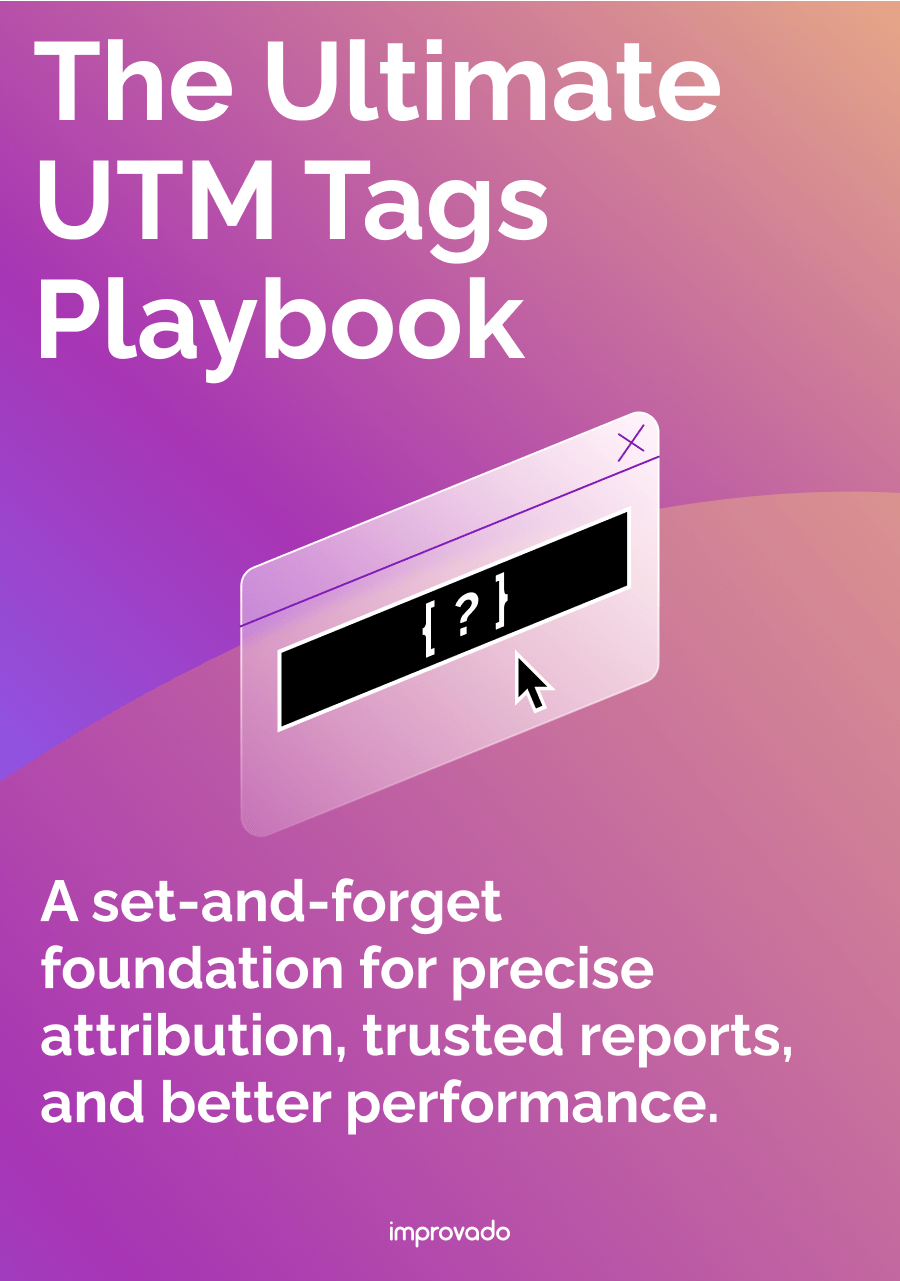If you're a performance marketer at an enterprise-level company or large-scale agency, you most likely manage multiple ad accounts with dozens of campaigns, where each campaign consists of numerous ad sets. Reporting on this number of data points can be messy and time-consuming, especially if you don't have standardized naming conventions.
This article outlines best practices for creating and maintaining standardized naming conventions for marketing campaigns. Adopting these practices can significantly reduce time spent on data management and enhance the accuracy of campaign performance insights.
Key Takeaways
- Campaign naming conventions are standardized rules for labeling marketing campaigns, ad sets, and ads.
- Standardization is crucial for improving data accuracy, enhancing team efficiency, and enabling faster optimization.
- Key elements of a robust naming system include objective, audience, platform, geographic target, product, campaign type, and date.
- A hierarchical framework organizes these elements across campaign, ad set/group, and ad creative levels.
- AI-powered solutions like Improvado's Marketing Data Governance automatically enforce naming conventions, ensuring data reliability.
What Are Naming Conventions?
Adopting a standardized naming system helps marketing teams efficiently track performance, prevent confusion, and maintain organized records. This ultimately improves reporting accuracy, facilitates better cross-channel analysis, and empowers more informed, data-driven decision-making.
Why Standardized Naming Conventions are Crucial for Marketing Success
Setting standardized naming conventions is not merely a bureaucratic exercise. The benefits extend across various aspects of marketing operations and analysis.
Improve Data Accuracy and Reporting
Consistent naming directly translates to cleaner data.
When every campaign, ad set, and ad follows the same format, data aggregation and analysis become significantly more accurate and streamlined. This enables marketers to confidently pull reports, compare performance across different channels, and gain reliable insights into what's truly working, leading to more effective decision-making.
Enhance Team Collaboration and Efficiency
Imagine a scenario where every team member uses a different system for naming campaigns. The result is chaos, wasted time searching for assets, and misinterpretations of data.
Standardized conventions provide a common language for the entire marketing team, including analysts, content creators, and media buyers. This reduces errors, boosts overall productivity by minimizing time spent on data management, and fosters seamless collaboration.
Enable Faster Campaign Optimization
With clean, consistently named data, marketers can quickly identify top-performing campaigns, ad sets, and creatives. This rapid identification allows for agile optimization, reallocating budgets, pausing underperforming ads, or scaling successful strategies with speed and confidence.
The ability to analyze performance swiftly means campaigns can be adjusted in real-time to maximize ROI, rather than waiting for laborious data cleaning.
Ensure Scalability and Future-Proofing
As your marketing efforts grow, so does the volume of campaigns and data. A well-designed naming convention system is inherently scalable, capable of accommodating new products, markets, channels, and team members without breaking down.
It ensures that even with hundreds or thousands of campaigns, your data remains organized and accessible, safeguarding your analytical capabilities for future growth and evolving marketing landscapes.
The Key Elements of a Robust Naming Convention
Effective campaign names are built from a combination of descriptive elements that, when used consistently, tell a comprehensive story about the campaign's purpose and structure.
While the exact elements may vary based on your business needs, these are the common components that form the backbone of a robust naming convention.
- Campaign Objective (LeadGen, BrandAwareness, Conversions): Clearly states the primary goal of the campaign. This helps quickly identify the campaign's strategic intent.
- Target Audience (Retargeting, NewCustomers, 18-24_Female_CollegeStudents): Specifies the audience segment being targeted. This is crucial for understanding who the message is intended for.
- Platform or Channel (GoogleAds, Facebook, Email, TikTok): Identifies where the campaign is running. This is vital for cross-channel analysis and platform-specific reporting.
- Geographic Targeting (US, EMEA, NYC, CA-State): Includes information about the geographical area being targeted, allowing for region-specific performance analysis.
- Product or Service (ProductA, CRM_Software, SpringCollection): Mentions the specific product, service, or product category being promoted.
- Campaign Type or Ad Format (Search, Display, Video, Carousel, Prospecting): Details the type of campaign or creative being used. This could also indicate a stage in the marketing funnel (TOFU for Top of Funnel).
- Date or Timeframe 2025Q3, Jan25, SummerSale): Incorporates the launch date, duration, or a specific promotional period of the campaign.
The table below outlines the essential fields to include when defining a clear, standardized framework for naming campaigns and assets. This helps maintain data integrity, streamline reporting, and support better decision-making.
| Field | Purpose / Why Useful |
|---|---|
| Campaign Objective | Clarifies the strategic goal and groups campaigns by purpose (e.g., LeadGen, BrandAwareness, Conversion) |
| Platform or Channel | Identifies where the campaign runs, essential for cross-channel comparison (Google, Facebook, TikTok, Email) |
| Target Audience or Segment | Tracks performance by audience type or segment (e.g., Retargeting, NewCustomers, Demographics) |
| Product or Service | Shows which products or categories are driving results |
| Geography or Region | Enables region-specific optimizations and reporting (Country, State, City, Market) |
| Promotion or Theme | Provides context behind campaign timing or behavior (e.g., Holiday, Sale, Launch, Event) |
| Creative Format or Ad Type | Allows comparison of performance by ad format (Video, Carousel, Display, Search) |
| Budget or Bid Strategy (optional) | Useful for understanding cost structure and performance at the ad set or group level |
| Date or Timeframe | Helps with audits, time-based analysis, and campaign lifecycle tracking (Launch date, quarter) |
| Version or Test Indicator | Differentiates A/B tests, creative variants, or experiment groups |
A Hierarchical Framework for Campaign Naming
Once you understand the essential elements, the next step is to establish a hierarchical structure that applies these elements across different levels of your marketing campaigns. This ensures specificity where needed, without overcomplicating the overall system.
1. Campaign Level

At the campaign level, the name should include information that identifies the campaign's overall strategy and primary attributes.
- Campaign objective: Clearly state the primary goal of the campaign: Brand Awareness, LeadGen, or Conversions. This helps quickly identify the campaign's purpose.
- Target audience: Include details about the audience segment being targeted. This can be demographics, interests, or behaviors, such as "18-24_Female_CollegeStudents" or "Retargeting_PastCustomers."
- Platform: Specify the platform where the campaign is running, such as FB for Facebook, IG for Instagram, or GOOG for Google Ads. This ensures clarity on where the ads are being placed.
- Date or time frame: Incorporate the launch date or the duration of the campaign. This can be formatted as 2023Q1 or Jan23, helping in tracking and reporting over specific periods.
- Campaign theme or unique identifier: Use a unique theme or identifier that distinguishes this campaign from others, such as SummerSale or HolidayPromo.
2. Ad Set Level
Ad set names (on platforms like Facebook) or ad group names (on platforms like Google Ads) should detail targeting specifics and budget allocations that differentiate one ad set/group from another within the same overarching campaign.
Common elements include:
- Target audience details: Further specify the characteristics of the audience segment being targeted within the campaign, such as age range, gender, interests, or behaviors. For example, "18-24_Female_RunningEnthusiasts" or "35-44_Male_TechSavvy."
- Budget allocation: Indicate the budget assigned to this ad set, if relevant. This can be in terms of daily budget or total spend, such as "Budget_50USD_Daily" or "Total_1000USD."
- Bidding strategy: Include the bidding strategy being used, such as "CPC" (Cost Per Click), "CPM" (Cost Per Thousand Impressions), or "CPA" (Cost Per Acquisition). This helps in understanding the optimization goal of the ad set.
- Placement: Specify where the ads within this ad set will be placed. This can include platform-specific details such as "FB_NewsFeed," "IG_Stories," or "GOOG_SearchNetwork."
- Creative type: Note the type of creative used in this ad set, such as "Video," "Image," "Carousel," or "Text." This detail aids in differentiating the performance of various creative formats.
3. Ad Creative Level

The naming of individual ads or creative assets should focus on the specific creative elements, messages, and calls to action used. This level allows for granular tracking of creative performance.
Common naming convention components include:
- Creative identifier: Assign a unique identifier to each creative asset, such as "Img01" for image, "VidA" for video, or "Txt03" for text files. This helps in distinguishing between different creatives within the same ad set.
- Version number: Include a version number to track different iterations or tests of the same creative. For example, "V1," "V2," etc., to identify which version is being used.
- Primary message or theme: Note the main message or theme of the creative, such as "Discount20," "FreeTrial," or "NewArrivals." This helps quickly understand the focus of the ad.
- Call to Action (CTA): Specify the call to action used in the creative, such as "ShopNow," "LearnMore," or "SignUp." This detail aids in analyzing which CTAs perform best.
- Format specifications: Include details about the creative format, such as dimensions or aspect ratio, like "1080x1080," "16:9," or "Story." This ensures clarity on the type of creative being used.
Campaign Naming Convention Examples in Action
Let's look at how these principles translate into actionable naming conventions across different popular marketing platforms, demonstrating their flexibility and effectiveness.
Example for Google Ads
Google Ads typically uses a Campaign > Ad Group > Ad hierarchy.
Campaign Name: SEARCH_LeadGen_ProductX_US_Q32025
- Type: Search
- Objective: Lead Generation
- Product: Product X
- Geography: United States
- Timeframe: Q3 2025
Ad Group Name: AG_ProductX_KeywordGroup_CompetitorBrand_BMM
- Identifier: Ad Group (AG)
- Focus: Product X, targeting competitor brand keywords
- Match Type: Broad Match Modified (BMM)
Ad Creative Name: AD_ProductX_Offer1_HeadlineA_DescV2_CTA_LearnMore
- Identifier: Ad
- Product: Product X
- Offer: Offer 1
- Headline: Headline A
- Description: Version 2
- CTA: Learn More
Example for Facebook Ads
Facebook Ads uses a Campaign > Ad Set > Ad hierarchy.
Campaign Name: FB_CONVERSION_Shoes_SummerSale_US_AUG25
- Platform: Facebook
- Objective: Conversions
- Product: Shoes
- Promotion: Summer Sale
- Geography: United States
- Timeframe: August 2025
Ad Set Name: AS_Retarget_WebsiteVisitors_Last30Days_ValueAudience_BID_CPA
- Identifier: Ad Set (AS)
- Audience: Retargeting website visitors from the last 30 days, specifically a high-value segment
- Bidding Strategy: Target CPA
Ad Creative Name: AD_Video_Shoes_Summer_Carousel_V3_CTA_ShopNow
- Identifier: Ad
- Format: Video
- Product: Shoes
- Theme: Summer
- Creative Type: Carousel
- Version: Version 3
- CTA: Shop Now
Example for Salesforce Campaigns
While not an advertising platform, Salesforce is crucial for CRM and lead management. Naming conventions here ensure consistent reporting on campaign influence.
Campaign Name: SF_WEBINAR_LeadGen_Q2_2025_ProductDemo
- System: Salesforce (SF)
- Type: Webinar
- Objective: Lead Generation
- Timeframe: Q2 2025
- Topic: Product Demo
Sub-Campaign Name (for specific promotions/sources): SF_WEBINAR_ProductDemo_LinkedIn_Promo_Email
- Source: LinkedIn Promotion
- Channel: Email
These examples illustrate how a structured approach can provide immediate clarity and enable sophisticated analysis, regardless of the platform.
Ad Campaign Naming Conventions Best Practices
Establishing a campaign naming convention is only the first step, maintaining its integrity and effectiveness requires adherence to a set of best practices.
Prioritize Consistency Above All
The single most critical aspect of any naming convention is consistency.
Develop and document clear, comprehensive guidelines that every single member of your marketing team must follow, regardless of their role or the platform they're using. This includes consistent use of terms, abbreviations, and the order of elements.
A consistent system is also a scalable and future-proof system, capable of adapting to growth and new initiatives without losing its organizational integrity. Regularly audit your campaign names to ensure compliance and provide ongoing training.
Use Clear Delimiters (Underscores vs. Hyphens)
Choose a delimiter (like an underscore _ or a hyphen -) to separate different components within your campaign names and stick to it universally.
- Underscores (_): Often preferred for separating major components as they are typically safe for URLs and don't interfere with word structure.
- Hyphens (-): Can be used, but sometimes cause issues with certain tracking systems or can be confused with words joined by hyphens.
- Pipes (|): Also an option, but less common.
Whatever you choose, document it and ensure everyone uses it the same way.
Avoid Special Characters and Spaces
Special characters (like &, #, !, ?, /, (, )) and spaces can break tracking parameters, cause issues with data imports, or render URLs unreadable. Always use alphanumeric characters and your chosen delimiter. If you need to represent a space, use your delimiter (e.g., Product_A instead of Product A). Keep names concise and relevant to avoid overly long strings.
Align with UTM Tagging for End-to-End Tracking
Your campaign naming convention should seamlessly integrate with your UTM parameters. UTMs are crucial for tracking the source, medium, and campaign name of incoming traffic in analytics platforms like Google Analytics.
- utm_campaign: This should ideally mirror your top-level campaign name or a consistent identifier from it.
- utm_source: Corresponds to the platform (e.g., facebook, google).
- utm_medium: Indicates the channel (e.g., cpc, social, email).
By harmonizing your internal naming convention with your external UTM strategy, you ensure a consistent data flow from click to conversion, allowing for robust, end-to-end performance attribution.
Document Everything in a Shared Resource
Create a centralized document (for example, Google Sheet, Confluence page, internal wiki) that clearly outlines all naming rules, approved abbreviations, and examples.
This document should be easily accessible to everyone on the marketing team and updated regularly. It serves as the single source of truth for all naming-related decisions and is invaluable for onboarding new team members.
Consider Privacy and Security
Campaign names, especially when used in UTM parameters, can be visible in URLs. Be mindful of including sensitive information like specific budget allocations, highly personal audience characteristics, or internal project codes directly in your public-facing campaign names.
Use coded systems or internal identifiers for such data where necessary, linking them back to detailed internal records, to protect sensitive business information and customer privacy.
Common Pitfalls and How to Avoid Them
Even with the best intentions, implementing naming conventions can hit roadblocks. Being aware of these common pitfalls and being proactive in avoiding them can save significant headaches down the line.
| Pitfall | Why It Happens | How to Prevent / Fix |
|---|---|---|
| Changing Names Post-Launch | Teams may be tempted to edit names after seeing performance data or forget the original structure, leading to confusion and broken reporting links. | Avoid edits unless absolutely necessary. If changes must be made, document them thoroughly. Ideally, finalize naming through pilot testing before a full rollout. |
| Inconsistent Use Across Channels | Different platforms have varying defaults and workflows. Without centralized standards, teams end up tagging inconsistently, making cross-platform reporting unreliable. | Align on a unified naming standard. Provide platform-specific guidelines and a shared codebook to ensure consistency across all channels. |
| Over-Complication | The desire to track every detail can result in excessively long and complex names that are difficult to read, manage, or report on effectively. | Focus on core fields that matter most to reporting and analysis. Add optional fields like testing identifiers only when needed, keeping names concise and functional. |
| Neglecting to Update Naming Rules | As products, markets, or reporting needs evolve, outdated naming structures become irrelevant or confusing, causing misalignment over time. | Review and update naming standards quarterly or bi-annually. Involve stakeholders and version-control naming guidelines to maintain alignment. |
| Failure to Test or Pilot | Launching naming conventions directly at scale often reveals issues like character limits, conflicts with platform settings, or unclear field definitions. | Run a pilot with a small group of campaigns first. Collect feedback, resolve issues, and refine before applying the convention organization-wide. |
Automating Campaign Data Management
Even the best naming conventions can break down when managed manually across dozens of platforms, teams, and markets. To keep pace with modern marketing operations, automation is essential.
Marketing Data Governance streamlines and enforces consistency across every stage of campaign data management.
It automatically validates and corrects campaign names, flags discrepancies in real time, and ensures compliance with pre-defined taxonomies. With AI-assisted suggestions and direct sync back to platforms like Google Ads, Meta, TikTok, and others, Improvado eliminates the need for manual policing and spreadsheets.
Beyond naming conventions, the platform unifies all marketing data from 500+ sources, harmonizes metrics, and provides governance tools to maintain a clean, centralized source of truth. This empowers teams to launch campaigns faster, maintain accurate attribution, and scale operations without sacrificing data quality.
If you’re ready to replace manual processes with intelligent automation and gain full control over your marketing data, book a demo with Improvado to see how Marketing Data Governance can transform your workflows.
.png)
.jpeg)



.png)
